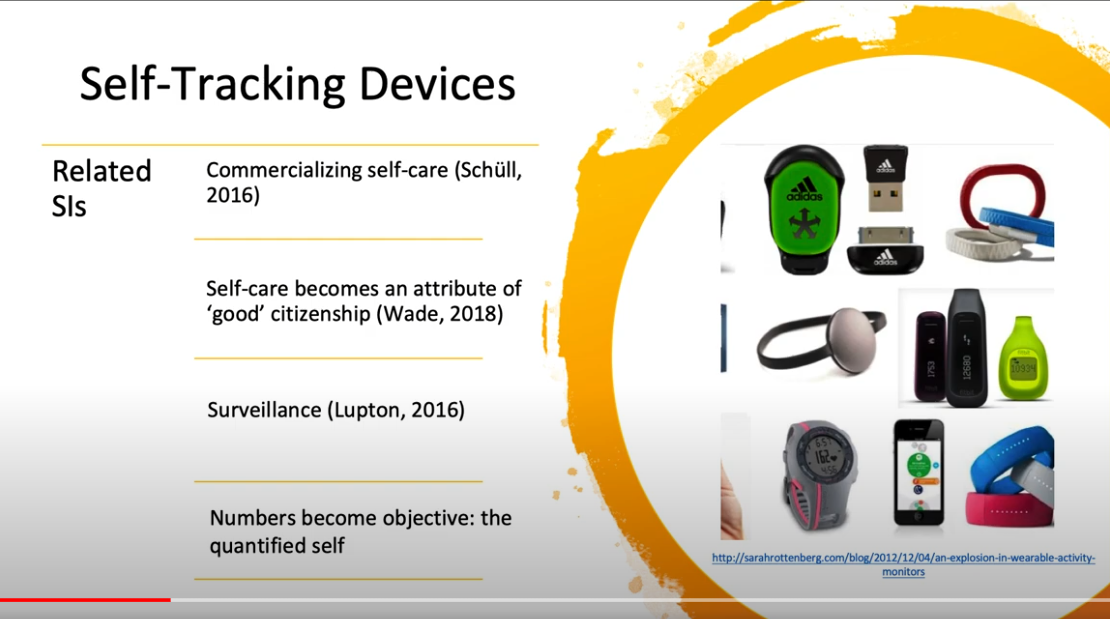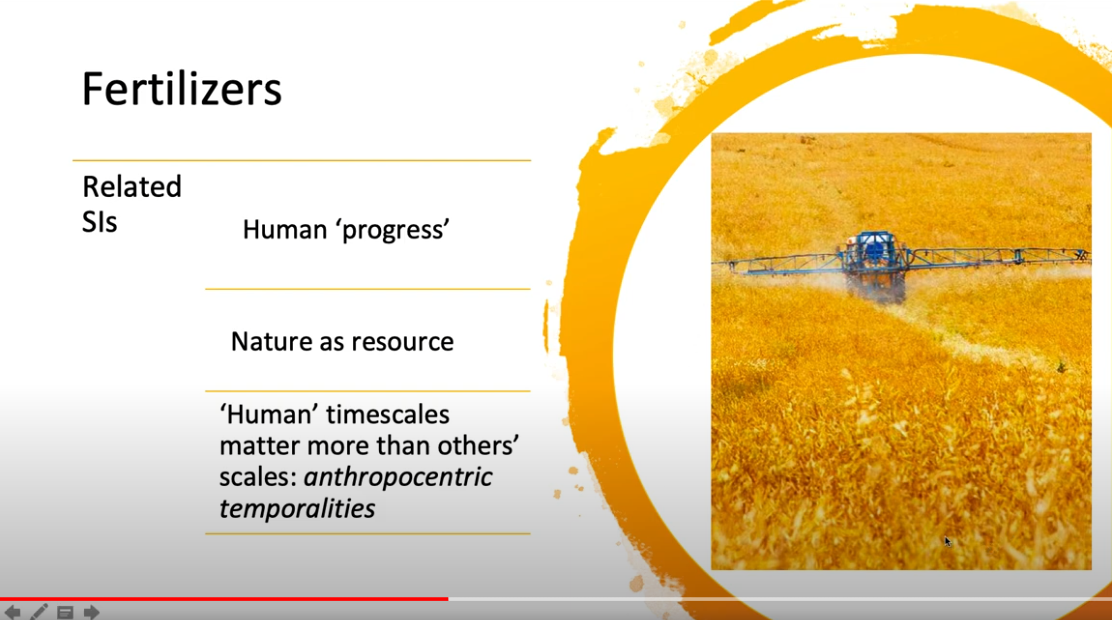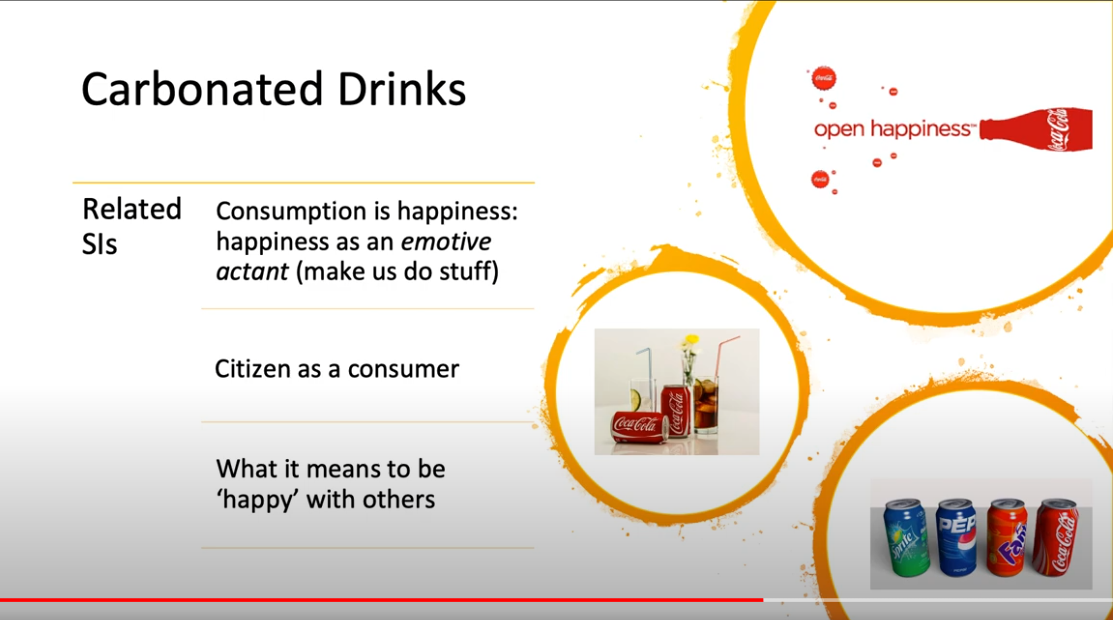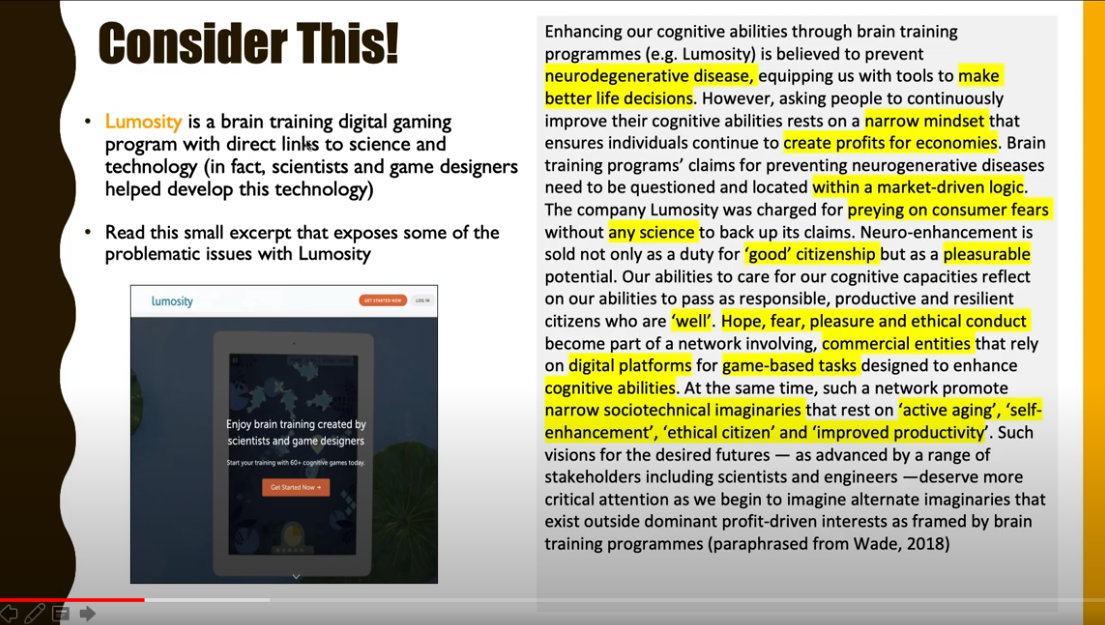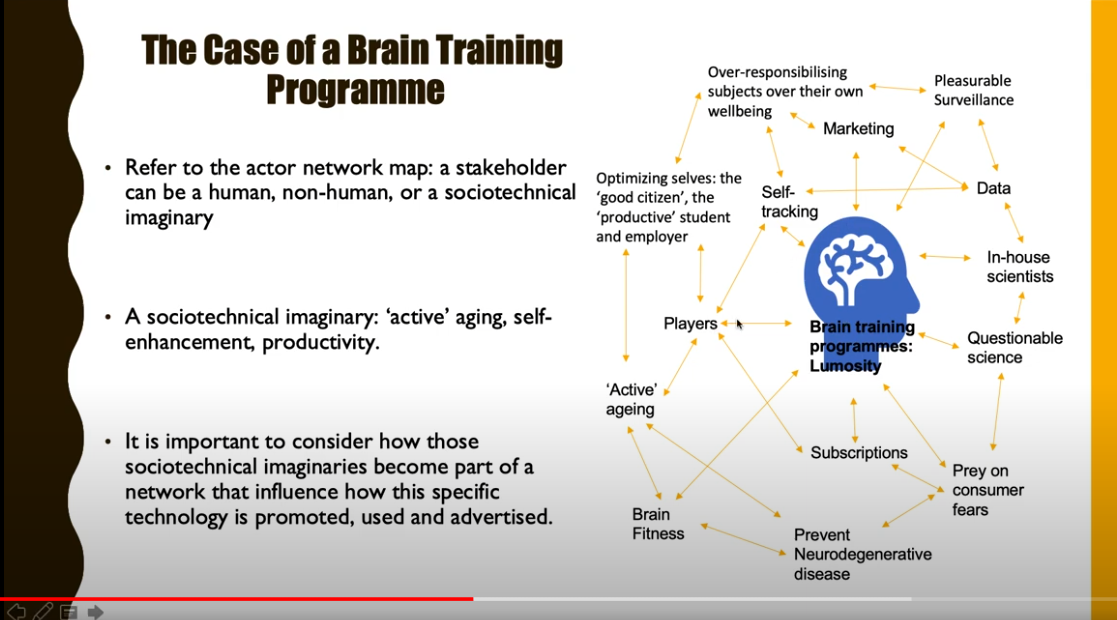2022-12-05
# Thesis
#thesis
# Writing Dump
- Break down the problem statement:
- Is the Filipino imagination stunted?
- Imaginainary crisis: a deficit in social imagination
- provide examples? perhaps a Filipino context?
- Most Filipinos do not have a dream <- maybe you can use this as an example? start with this, then talk about the imaginary crisis
- My argument: it’s not that we have limited imaginations. it’s just that we are restricted by our cultural conditionings….which are shaped by systems of oppression
- Imaginainary crisis: a deficit in social imagination
- Are technological presents inequitable?
- tech industry: contrast dominant ideologies v.s. ethical issues
- A historic and observable relationship between the two (the problem)
- Restriction of social imagination through systems of oppression
- Inequitable technological presents
- speculative design problematizes the relation of future consequences and the relationship between technology and humans
- probelmatize our current conditions (technological inequities) and contemplate future alternatives
- reframing the status quo?
- we shouldn’t just be accepting of these inequities
- My argument:
- Technologies are socially constructed. Innovation does not happen in a vacuum
- Social construction of technology: technology does not determine human action, but that rather, human action shapes technology. They also argue that the ways a technology is used cannot be understood without understanding how that technology is embedded in its social context.
- technologies as sociotechnical systems
- larger systems— including norms, values, and assumptions— are encoded in and reproduced through the design of sociotechnical systems.
- design reproduces structural inequality
- the relationship between design and power.
- the technologies we produce reflect the systems of oppression that we are embedded in
- Technologies are socially constructed. Innovation does not happen in a vacuum
- Is the Filipino imagination stunted?
- Contrast experiences
- the popularity of outsourcing (e.g. BPO industry, gig platforms, headhunter agencies) V.S. labor abuses
- the rise of edtech (e.g. bootcamps, MOOCs) v.s. fast food education
- popularity of Web3 V.S. lost money (i’m included LOL), dehumanization (Filipinos as NPCs)
- Dominant technological imaginary v.s. digital cultures from the peripheries
- This is the spectrum I want to explore
- Examples of local resistance
- bayanihan: grassroots community organizing?
- indigenization, resourcefulness
- ^ these can go both ways though….dark sides to everything
- Sources
- Networking Peripheries
- Technology of the Oppressed
# Outline Drafts
# Thesis
- Background of the Study
- MoreThanTech (COPY THIS PARAGRAPH EXAMPLE, REMAKE INTO PHILIPPINE CONTEXT)
- However, digital technologies are also used to harm people. Recently, there is greatly increased attention to the ways that ==technology design, development, and deployment often reproduce existing forms of inequality.==3 There is a growing conversation about persistent gender and racial disparity in Silicon Valley.4 The use of “Big Data” across many areas of life has civil rights implications;5 for example, investigative reporting by ProPublica exposed algorithmic bias in predictive sentencing software, and highlighted racial inequality in the distribution of technological harms and benefits.6 Department of Homeland Security requests for software companies to help develop “good immigrant/bad immigrant” sorting software is feeding a debate about the ethical responsibilities of technology developers.7 Social media has become a terrain riddled with trolls, botnets, clickbait, and disinformation campaigns; some operate with political objectives, others for profit, and some just for the fun of it (or all of the above).
- Filipino cultural values
- Bahala na
- Negative: Ganyan talaga ng buhay
- Filipino resilience
- Positive: risk taking; radical imagination?
- Negative: Ganyan talaga ng buhay
- relate to our acceptance of the status quo a.k.a. technological inequity
- connect to digital justice perception survey
- Bahala na
- Design
- Design for the unreal world
- How might I use unreality to question the authority of a specific reality?
- Liberatory Design
- History is a series of design decisions
- Systems produce what they were designed to produce.
- Everything is by design.
- We are ALL designers.
- design justice
- how does design reproduce and/or challenge inequities?
- The point of this story is to provide a small but concrete example from my own daily lived experience of how ==larger systems— including norms, values, and assumptions— are encoded in and reproduced through the design of sociotechnical systems,==
- Utopia v.s. dystopia
- Popular narratives of design, technology, and social change are dominated by techno- utopian hype about ever- more- powerful per-sonal devices, “intelligent” systems, and “Twitter revolutions,” on the one hand, and totalizing, pessimistic accounts of digital surveillance, disinformation, and algorithmic injustice, on the other.
- My broader goal is to advance the growing conversation about the pitfalls and possibilities of design as a tool for social transformation.
- designers need to explicitly identify disadvantage and oppression, call it out and act upon it. This requires designers to actively address issues of marginalisation and oppression in their designs:
- The goal of this book is to ==spur our imaginations about how to move beyond a system of technology design largely orga-nized around the reproduction of the matrix of domination.==
- Anti-Oppressive Design
- an approach that considers both the values embedded in technological design and the environment that surrounds how a technology is built and researched.
- Aorta Collective’s Iceberg of Oppression
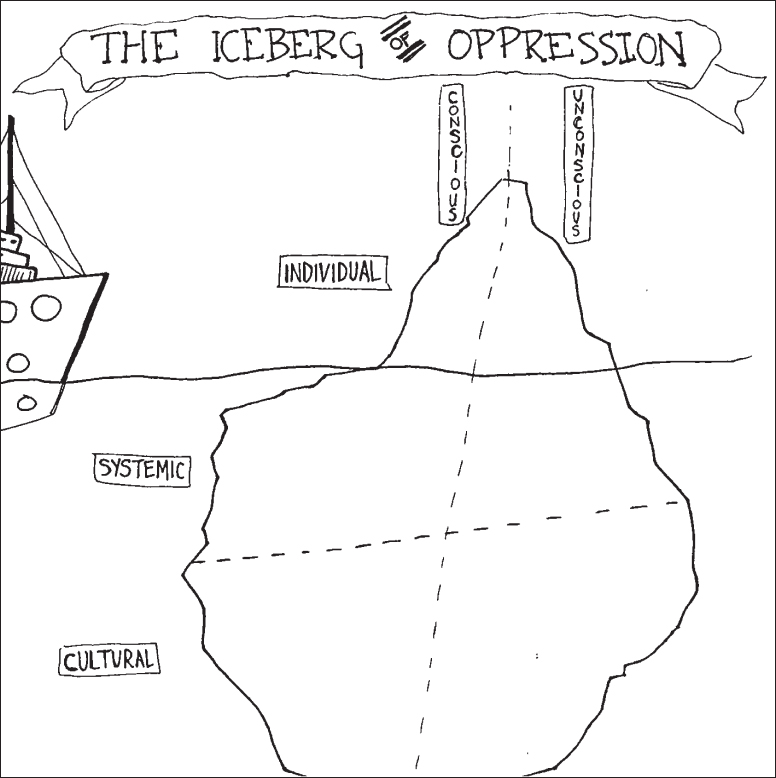
- By visiting the Hollaback site, the women were able to ==problematize their experiences.== By reading each others stories, they were able to u==nderstand harassment as a problem, rather than as a norm.== Usually, problematizing an issue is the work of social movement leaders—in this case, the ==stories were doing the transformation.==
- This is called a “frame transformation,” a cognitive and emotional shift in how people understood and felt about their experiences.
- Design for the unreal world
- My personal experiences with tech
- ive written about maintenance work, fast food education, and web3
- from engaging with tech communities to interning and freelancing for companies
- cite PH tech issues? affects of colonialism and capitalism
- The Philippines as a hub for providing human capital: BPO industry and digital platforms -> labor inequalities
- digital colonialism (see Make Space for Maintenance and Miscellaneous Notes/Daily Notes/2022-10-30)
- reliance on foreign technologies and software, affected by foreign-oriented economic policies
- sweaty startup guy
- The Philippines as a hub for providing human capital: BPO industry and digital platforms -> labor inequalities
- Examples
- Digital Justice Perception Survey
- despite users professing to be literate, their actions say otherwise (i.e. carelessness with social media usage)
- The Missing Economy of the Philippines
- the most prominent tech firms that are operating in today’s landscape are not founded and headquartered in the Philippines E.G. e-commerce
- monopoly problem
- even though we may have our own disruptive businesses, they are still far from changing the status quo of who is rich. Conglomerates still reign
- e.g. prominent fintech players like GCash and Maya
- the PH is a crypto-attached nation
- some of the highest adopters of crypto coins, and largest players of crypto-based games like Axie Affinity
- History of Philippine digitalization
- The lost momentum to industrialize, along with economic policies that are foreign-oriented, caused the Philippines to become dependent on the service industry. The lack of national industry and grand political plan to do so lead the Philippine ICT to be highly reliant on foreign technologies and software which has a negative impact on the pace of current digitalization in the Philippines.
- Digital labor bayanihan
- example of a Filipino cultural value that shapes the collective “anchoring” of digital platform workers to survive a precarious digital market.
- Digital labor influencers also serve as promoters of the Philippine government’s vision of promoting Filipinos as “world class workers” (imaginary) while allowing it (along with digital platforms) to avoid its responsibility to attend to the deeper structures of labor inequality.
- Student Startup Ecosystem studies
- For many Filipino students, dream career prospects end at Accenture (now with several offices across the Philippines) or at multinational pharmaceutical companies. While there is a growing entrepreneurial culture, tech isn’t associated with the majority of small businesses–the startup scene is still rudimentary. For students, the lack of role models and introduction to alternative career prospects from the dominant monopolies, contributing to lack of entrepreneurial talent.
- When technology is powered by the few, what happens?
- In its current state, emerging markets must reject the same mistakes that Silicon Valley had welcomed in to invest in their own growth. Regulators and policymakers must step in to help local economies flourish, while also putting constraints on technologists. Cross-pollinators and balikbayans must be wary of tech saviourism and ‘heropreneurship’, especially when entirely unaware that the practices they parrot from Silicon Valley will few times suffice in their home country. While success breeds more success in the near-term, understanding the cultural and long-term impact of the products and economic models we breed is critical––and we already have years of development ahead to forewarn us.
- Idol worship
- bayanihan seen in the community building of grassroots technology nonprofits and community organizers
- Digital Justice Perception Survey
- MoreThanTech (COPY THIS PARAGRAPH EXAMPLE, REMAKE INTO PHILIPPINE CONTEXT)
- Objectives of the Project
- after listing the objectives, write paragraphs breaking down each one
- perhaps explain how my tracks (information design and comptuer science)
- Main question ideas:
- How can we foster Filipinos’ critical consciousness of technology? So that we can encourage a more equitable technological future for the Philippines?
- How can we spur Filipino imaginations about how to move beyond inequitable technological presents?
- How can we cultivate Filipinos’ critical questioning of technology through design?
- How can we cultivate Filipinos’ critical inquiry competence of technology?
- How can we trigger critical thinking in Filipinos when it comes to technology?
- How can we build Filipinos’ critical consciousness about technological futures?
- Solution: through a design provocation
- Critical consciousness
- Critical consciousness calls attention to how learning involves an awareness of understanding how inequality operates in society, including its structural roots, and the agency to engage in action toward social transformation.
- Definition of Terms
- a set of beliefs, institutions, laws, and symbols common to a particular social group and its corresponding society. Imaginaries are self-evident to the point of unconsciously influencing social behavior . In this thesis, I’m interested in studying technological and future imaginaries. A technological imaginary can be seen as a set of practice-based beliefs about the role of technology in social life and social change. A future imaginary can be seen as a set of collective expectations of the future.
- http://www.artandpopularculture.com/Imaginary_%28sociology%29
- https://repository.upenn.edu/edissertations/3513/
- https://garden.johanneskleske.com/future-
- Methodology
- Research questions
- What perceptions do Filipino technologists have towards the future and technology?
- What are their envisioned probable and preferred technological futures?
- What are the influences and effects of these imaginaries on their lives?
- Participants
- student and professional technologists
- why these people? seen as builders of the future
- explain why you’ll keep the research methods the same for them…it’ll be easier to compare
- Data collection
- Surveys
- Participant profile: background information
- Context: uncover the perceptions Filipino technologists have towards the future and technology.
- Quantitative part: attitudinal beliefs
- Qualitative part: defintions
- What does the term “future” mean to you? (Not as a definition but as what meaning does it have to you as an individual technologist)
- What does the term “technology” mean to you? (Same context)
- Imagination: discover their perceived futures
- Probable futures
- Preferred futures
- Semi-strucutred interviews
- purpose: more indepth, see how their answers connect to their lives and practices
- Desk research
- Surveys
- Data analysis
- Futures Triangle
- CLA
- User testing
- Quantiative
- User Experience Questionnaire+
- The scales of the questionnaire cover a comprehensive impression of user experience. Both classical usability aspects (efficiency, perspicuity, dependability) and user experience aspects (originality, stimulation) are measured.
- Recommendations
- Info websites: Content Quality, Trustworthiness of Content, Clarity
- Games: Immersion, Stimulation, Visual Aesthetics, Novelty, Dependability, Intuitive Use
- Do not select more than 5-6 scales
- Final scales (3 for info, 3 for experience)
- Experience
- Clarity
- Aesthetics
- Novelty (baka i don’t need this)
- Intuitive Use
- Content
- Content Quality
- Trustworthiness of Content
- Experience
- User Experience Questionnaire+
- Qualitative
- In what ways did this website challenge or change the way you think of future and technology?
- Additional comments/feedback/suggestions (optional)
- Quantiative
- Research questions
- Notes
- DONT FORGET TO TURN TO FIRST POV
# Research Dump
- https://www.tandfonline.com/doi/full/10.1080/17439884.2020.1694944?src=recsys
- Deep Futures and China’s Environment
- Investigating ’Habitus Of Technology’ As A Framework To Better Understand Technologies Of Learning: A Causal Layered Analysis Of Two Perspectives
- https://www.technologyreview.com/2020/02/21/905817/how-big-tech-hijacked-its-sharpest-funniest-critics/#Echobox=1583767307
- Networking Peripheries: Technological Futures and the Myth of Digital Universalism
- In Networking Peripheries, Anita Chan shows how digital cultures flourish beyond Silicon Valley and other celebrated centers of technological innovation and entrepreneurship. The evolving digital cultures in the Global South vividly demonstrate that there are more ways than one to imagine what digital practice and global connection could look like.
- a powerful overview of the ways that technological innovation often happens on the margins of society, far from the inno-vation hubs imagined and created by city planners, state officials, and private sector investors. She describes how digital cultures that emerge organically from the peripheries, including in the Global South, are different from those produced via the universalizing imaginary of tech-nosolutionists who operate from positions of great power.
- What work do universalisms do? That is how do they shape our understanding of networks and more broadly social, political and cultural change? Chan suggests that ==the way digital futures are imagined, narrated and created—through assumptions about innovation, progress, technologies agency – are limited by these universal attributes and affordances of technology.==
- To disrupt these, she posits an ethnographic methodology that emphasize “vibrant micronarratives and situated stories around ==IT and innovation culture==” (xi) Specifically she wants to chart how these unhinge grand narratives of progress that are the foundation of these universalisms around technology. She examines how information technologies have become a shorthand for “imagining global connection” (xiii) and in doing so seeks to undo the “context-erasing” (5) accounts that have so far been the dominant trend in studies of global networks and information technologies.
- “the imaginaries and innovations that underpin digital culture and surround networked connections”
- The “myth of digital universalism” manifests not only in the means by which it keeps public narratives and imaginations fixed exclusively around so-called “centres” of innovation, but in the means by which it simultaneously discourages attention to digital dynamics beyond such centres—a dynamic conjuring colonial relations to data and the periphery that reporters and scholars of global digital cultures alike must be wary of reproducing.
- Global imaginaries around IT in the new millennium, after all, have made Silicon Valley hackers, the obsessions and aspirations of high-tech engineers, and the strategic enterprise of competitive technology entrepreneurs, the stuff of popular Hollywood films and obsessively followed Twitter accounts. These are a cast of increasingly recognizable actors, heroes and villains.
- Far from merely lagging behind or mimicking centres, dynamic activities from the periphery suggest how agents once holding minor status can emerge instead as fresh sources of distinct productivity. Their diverse threads unsettle the unspoken presumption that a single, universal narrative could adequately represent the distinct digital futures and imaginaries emerging across a range of local sites today
- “digital universalist” models (Chan, 2014) that ==problematically elevate narrow versions of Western and elite digital practice and innovation as the only relevant pathway to the future==
- Imagining technological futures withand in between the interfaces of the diverse forms of knowledge practice that come alive among them –and that can come together across differences, rather than in spite of it –instead becomes a key resource for imagining new digital futures (Tsing, 2005).
- Sustainable Technological Futures: Moving beyond a One-World-World perspective
- In this critique, we ==problematize the framing of technological futures== in design and computing discourse through rhetorical devices such as the Futures Cone which we contend promotes a one-world-world perspective, in that it assumes a ==collective (western) acceptance of a particular historicity and notions of time and progress.== This perspective currently dominates the practical design and implementation of many new technological devices and systems.
- Problematize cont.
- Abstract 2 points towards the necessity of AI systems to provide meaningful explanations for their behavior and that currently “explanations are predominantly implemented after the fact.” Concerning this matter, the authors problematize “techno-centric engineering processes and development teams that lack diversity and empathy.”
- https://www.academia.edu/39021258/The_limits_of_the_imaginary_Challenges_to_raising_critical_consciousness_about_datafication_and_algorithmic_archiving
- encourage people to imagine future possibilites
- challenge: getting people to actually imagine in ways that do not reproduce current ideological trends or cede control/power to external stakeholders
- hegemonic ideology of pwoer and control
- goals:
- to penetrate and disrupt both learned and tacit frames
- to enable people to start thinking critically
- to build new pathways for thinking
- ACS functions
- First, to ask participants to think about ==‘What is going on here?’== in relation to how their data is being formulated, stored, and fed back to them through various platforms and digital service infrastructures. This question (What is going on here?) is not stated as much as it is ==provoked==, which means essentially that we want participants to raise the question themselves.
- This more open-ended goal was accompanied by an interventionist, critical pedagogy goal, inspired by a second question, ==‘Shouldn’t we be more engaged in actively creating rather than simply accepting the future?’== and ‘On what level might we be actually ‘world-making’ as we engage in the mundane, the banal, the playful acts of everyday conversation and digital media use?
- Therefore, each workshop tested a different set of techniques to prompt participants to ==dig beneath the surface of activities to identify some of the implicit assumptions and premises informing these actions. And then build some imaginariesof their own.==
- 1st objectives: dig deep to identify implicit assumptions and premises that inform their actions
- 2nd objectives: surface these imaginaries through design
- How can design interventions help push the limits of public imagination to think in truly alternative ways about their futures?
- Critically Conscious Computing
- Computer science (CS) is often taught as a utopian discipline, full of powerful abstractions that can transform lives and society for the better. However, as computing has reshaped every part of society in both highly visible and highly invisible ways, it has become clear that the foundational ideas in CS carry explicit values: ones of automation, replacement, standardization, centralization, and amplification. These values have positioned it as a discipline of power, and due to the ignorance with which it is often applied, often one of oppression. In this book, we reconsider the technical and pedagogical foundations of CS and CS education from this lens, and offer teaching methods for secondary education that ==foster students’ critical consciousness of computing, with the hope of fostering a more equitable, culturally sustaining, and just future of computing.==
- Introduction
- CS teaching, therefore, naturally gravitates toward these utopian narratives.
- This uncritical view of CS is far from just an incomplete story — for many, it is becoming an invisible crisis of injustice and oppression.
- Our focus is therefore adolescents, and on a counter narrative about computing that views CS as both magical, but also fraught. It simultaneously examines the racist, sexist, ableist, classist reality of our global society, and demonstrates how CS is often used to amplify and reinforce these forms of oppression in daily life. It shows how only certain people experience the utopian narrative of CS, and those that do go on to perpetuate this narrative in higher education and industry, systematically and often unintentionally excluding those who were never included. It positions students as agents of social change, both in how they use computing, but also in whether they use it, and to what end. This is a book for secondary CS educators who want to develop the agency and skills to ==catalyze social change though their students.==
- CS, Equity, and Justice
- Computing is not neutral; it is imbued with the values of its creators.
- Teachers can build students’ critical consciousness of computing, equity, and justice by linking the injustices in their lives to the technology in their lives.
- Raising questions about how computing does harm is an opportunity to talk about more equal, equitable, and just futures, and reposition computing from a technology that is neutral or in the way, to a technology that might be harnessed for justice.
- Apparudai on global cultural flows
- the world we live in today is characterized by a new role for the imagination in social life
- the imagination as social practice: an organized field of social practices, a forom of work, and a form of negotiation between sites of agency and globally defined fieds of possibilties
- the imagination is now central to all forms of agency, is itself a social fact, and is the key component of the new global order
- STEPWISE Science Education on Sociotechnical Imaginaries
- This video is intended to be used by teachers to introduce students to the concept of sociotechnical imaginaries (SIs) - which are sets of values, principles, etc. that guide assemblage of many living and non-living actants into a dispositif (network of actants) that generally promotes said values, principles, etc. Such teaching can help students to more fully understand relationships among fields of science & technology and societies & environments (STSE) and sociopolitical actions to try to overcome harms in such relationships.
- Teacher Intro
- Example SIs
- Example SIs
- Teacher-Input
- Introduction
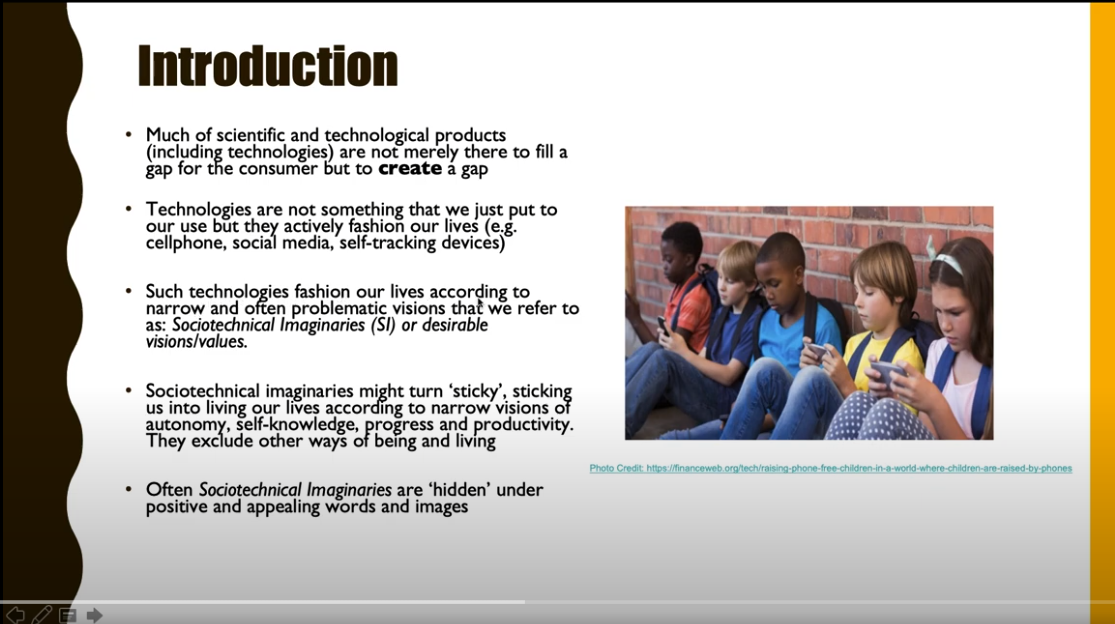
- Case Study on Lumosity
- Introduction
- Teacher Input & Student Applications
- The problem

- Emotions as stakeholders
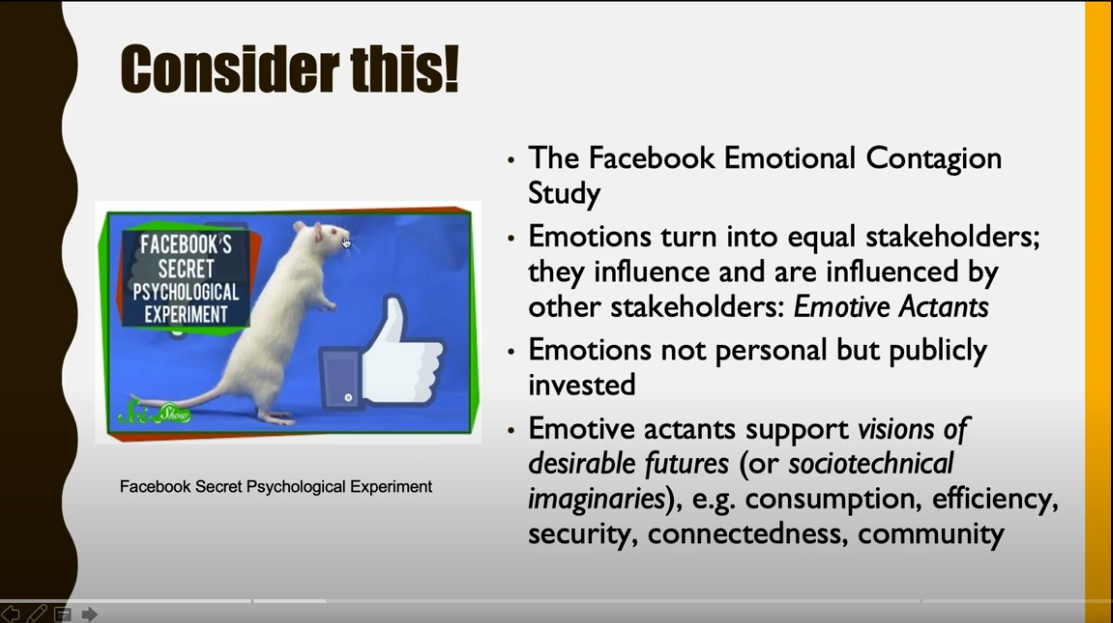
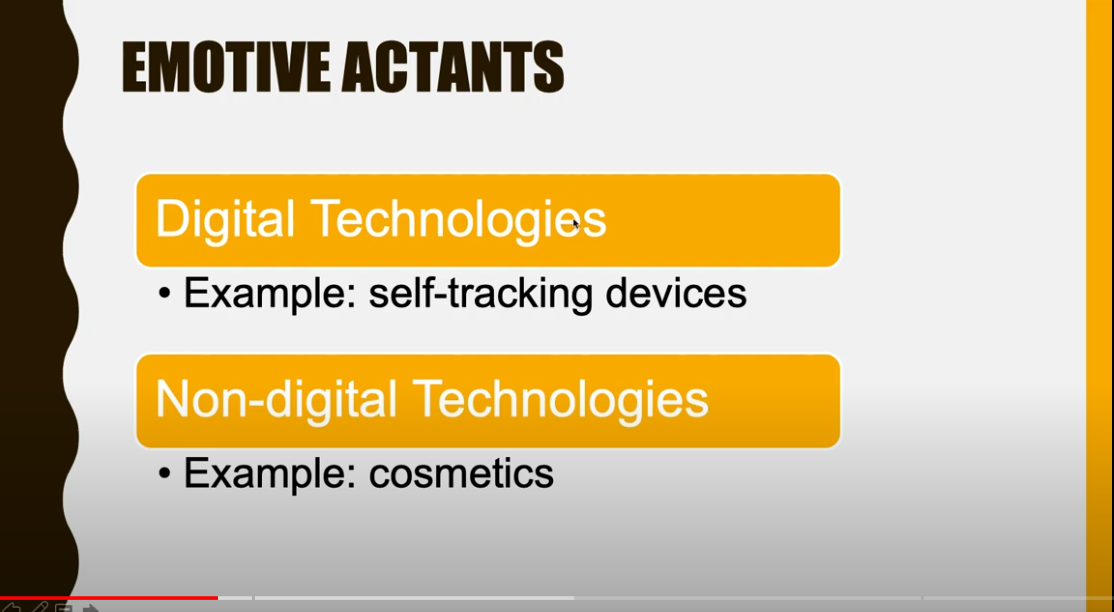
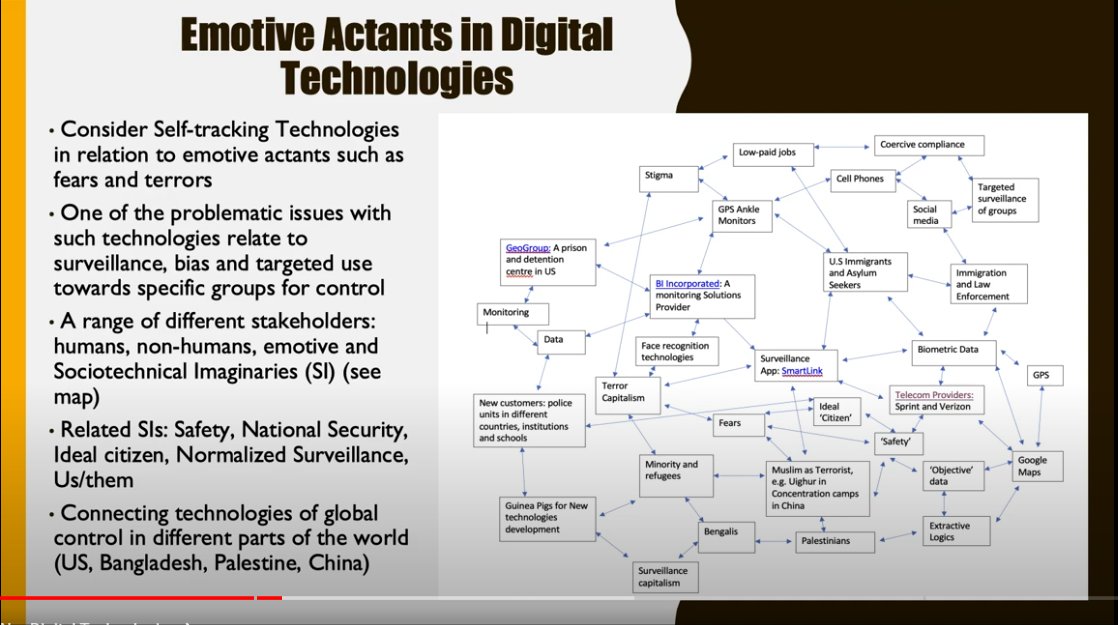
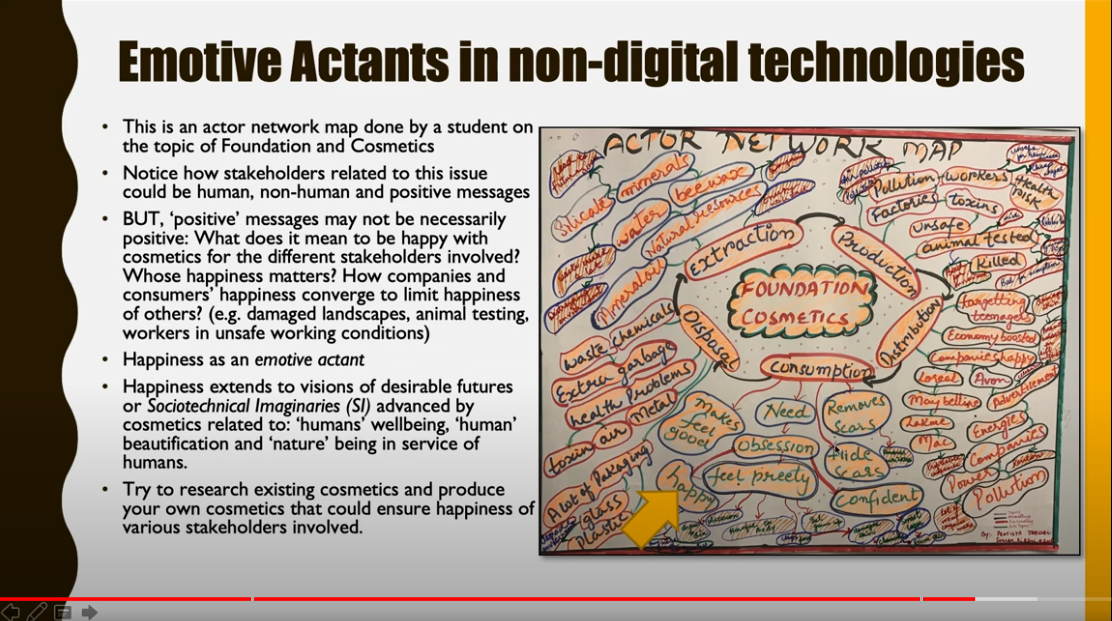
- The problem
This talk will address the potential for the imaginary as a design tool for social change. Designer and researcher Gillian Russell will introduce her recent work which explores the role of contemporary design practice in future imagining, future literacy and future ethics. Working at the intersection of design, anthropological futures, and narrative environments, her work uses a combination of speculative intervention and value-sensitive design to engage publics to question the authority of a specific reality in order to foreground its assumptions and ideologies – raising awareness that if reality is made, then it can be unmade and made anew.
Steve Jobs promised us computers as “bicycles for the mind”; what we got instead are assembly lines for the spirit.
